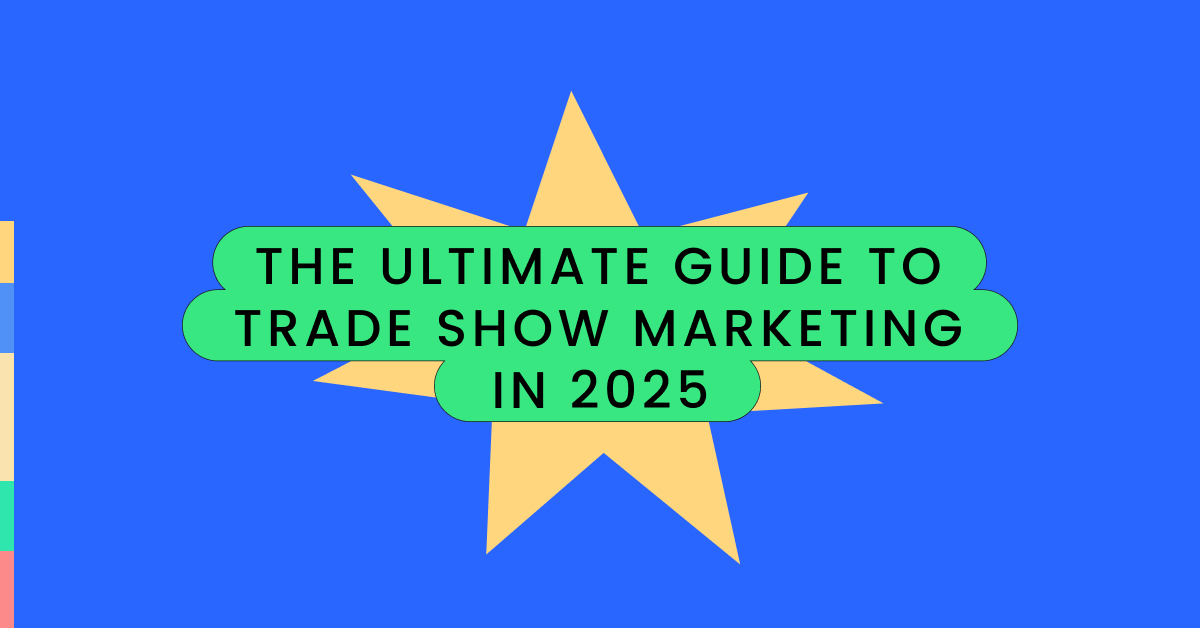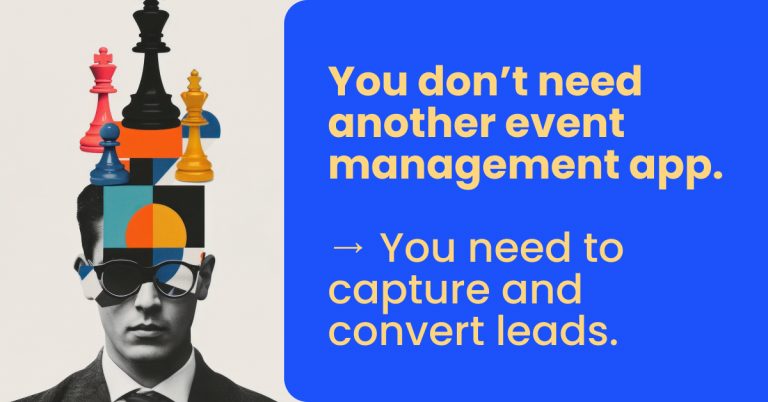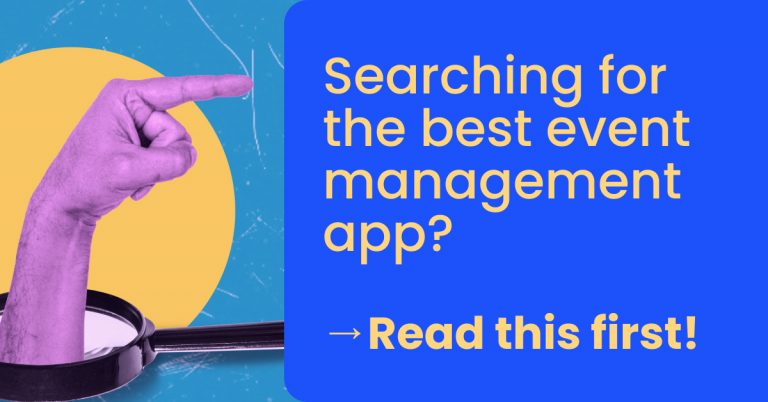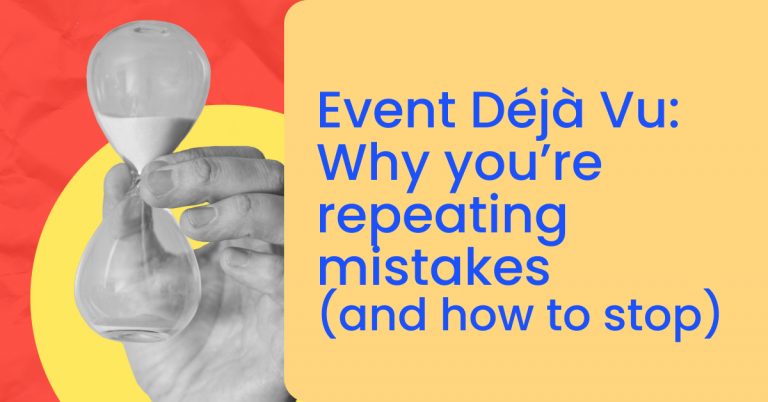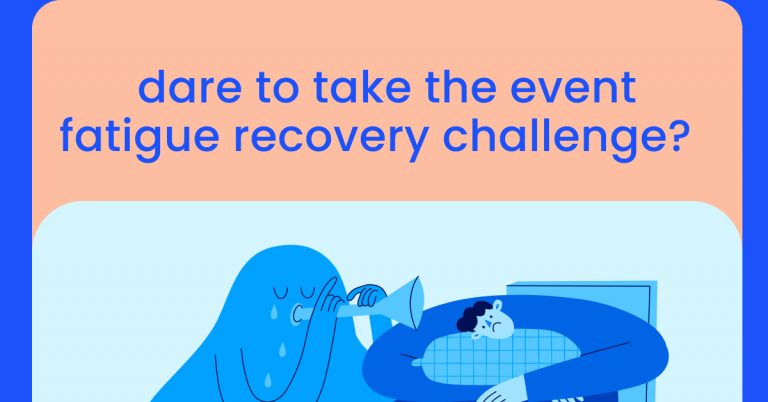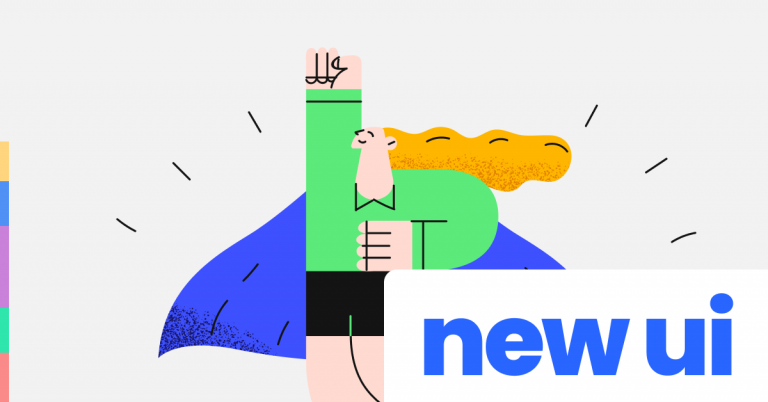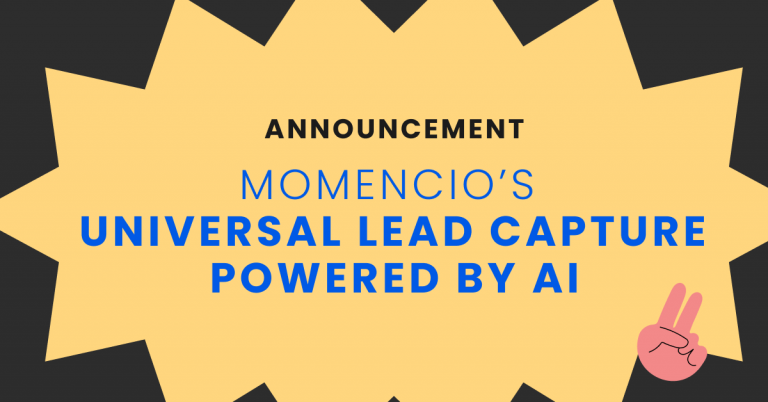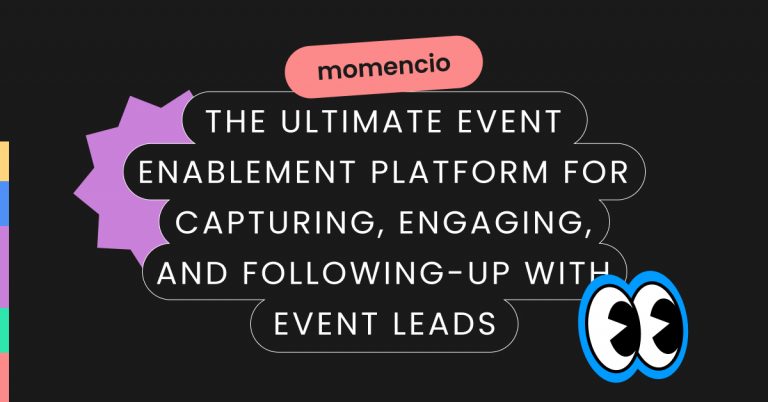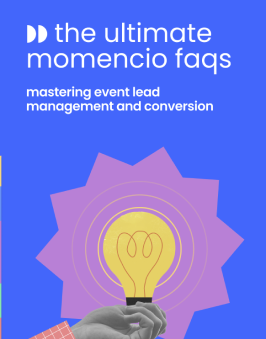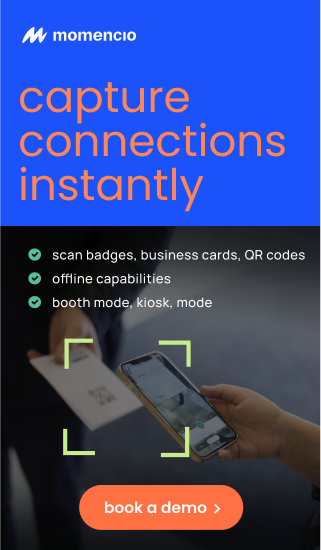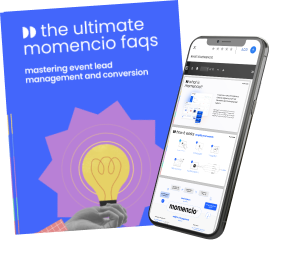Most marketers treat trade show marketing like a checklist item.
→ Reserve a booth.
→ Print some brochures.
→ Hand out freebies.
→ Smile for three days straight.
When it’s all over, they pack up their booth and wait. They wait for leads to respond to emails, for calls to be returned, and for the event ROI to somehow justify the massive budget they blew.
Here’s the problem: this strategy is built on outdated assumptions.
Assumption 1: People visit trade shows to collect swag.
Assumption 2: The more people stop at your booth, the more successful you are.
Assumption 3: Attendees will remember you if you put on a good show.
None of this is true.
Here’s what’s really happening on the trade show floor:
- Attendees are bombarded by hundreds of booths, all screaming for their attention.
- They’re in “problem-solving mode,” scanning for companies that can help them achieve their goals.
- If you don’t grab their attention and offer immediate value, they’ll forget you by the time they leave.
2025 demands a new approach. Trade shows are no longer about being the loudest booth or giving out the best freebies. Success comes from showing up with a strategy designed to:
- Attract the right people (not just anyone with a badge).
- Make a lasting impression by solving a specific problem.
- Convert conversations into measurable results before the event is even over.
This guide is your blueprint for making trade show marketing work for you—not the other way around.
Stop treating trade shows like a beauty pageant
Let’s get one thing straight: no one cares how big your booth is.
You could have the tallest banners, the brightest lights, or a DJ spinning tracks, but here’s the kicker—most attendees won’t remember any of it. They’re too busy navigating a maze of booths, trying to find solutions to their problems.
This isn’t a beauty pageant. It’s a search for relevance.
Why the “biggest booth wins” myth is holding you back
For years, brands have equated flashy booths with trade show success. The thinking goes like this:
- Bigger booths mean more foot traffic.
- More foot traffic equals more leads.
- More leads equal more sales.
Sounds logical, right? It’s not. Here’s why:
- Most attendees aren’t your target audience. You’re attracting crowds, but they’re not qualified. These visitors take your giveaways, nod politely, and move on.
- Big booths don’t build trust. Size impresses no one. Relevance and credibility are what close deals.
- You’re wasting resources. All that extra budget for a larger booth could be spent on strategies that actually convert.
How to deliver value that stands out in a crowded hall
What if you stopped trying to attract everyone and focused on resonating with the right people? Here’s how to make it happen:
- Speak directly to their pain points. Your booth’s messaging should feel like it was designed just for your ideal customer. Example: Instead of “Industry-leading solutions,” try “Cut your production costs by 25%—here’s how.”
- Make it interactive. People remember experiences, not slogans. Think live product demos, hands-on activities, or quick workshops. Give them a reason to stay longer.
- Offer immediate value. Don’t wait for post-show follow-ups to provide solutions. Hand over actionable tools or insights they can use right away.
Shifting focus from visibility to meaningful connections
The booths that win at trade shows don’t focus on visibility. They focus on creating meaningful connections with the right people.
Here’s how to rethink your approach:
- Pre-qualify your audience. Use your pre-show marketing to target attendees who match your ideal customer profile. Whether it’s personalized emails, social media campaigns, or targeted ads, make sure the right people are showing up.
- Train your booth staff like sales pros. Your team isn’t there to hand out flyers. They’re there to engage, qualify, and convert. Equip them with the tools and scripts to do that effectively.
- Focus on outcomes, not impressions. Forget about how many people visit your booth. Measure how many meaningful conversations you have and how many next steps are booked.
In a world where most booths blend into the background, your goal isn’t to shout louder—it’s to matter more.
The only metric that matters at trade shows
Most trade show marketers measure the wrong things.
They’ll boast about foot traffic, talk about the number of business cards collected, or point to how many people loved their booth design. But none of these metrics tell you if the trade show was a success.
Because the only metric that matters is this: how many leads turned into revenue.
Why leads don’t equal success
Let’s break this down.
You leave a trade show with 500 leads. Sounds great, right? But what happens next?
- You realize half of those leads aren’t even in your target audience.
- Of the other half, most won’t remember your booth or why they gave you their information.
- By the time you follow up, the leads have gone cold, and your emails are sitting unopened.
The problem? Collecting leads doesn’t mean you’re converting them.
Trade shows aren’t about how many people stop by your booth—they’re about how many people buy because of it.
How to define trade show KPIs that drive revenue
If you want your trade show marketing to deliver real results, you need to focus on KPIs that tie directly to your bottom line. Forget vanity metrics. Here’s what to measure instead:
- Qualified leads generated. Not every lead is created equal. Define what makes a lead “qualified” for your business and only count those.
- Sales meetings booked. A lead doesn’t count until there’s a clear next step—like a demo, a discovery call, or a follow-up meeting.
- Pipeline value created. Track the total potential revenue tied to the leads you generate at the event.
- Deals closed. The ultimate goal is revenue. Your team should report on how many deals were won as a direct result of the trade show.
Tracking outcomes: the tools and systems you need
To measure what really matters, you need the right systems in place. Here’s what you’ll need:
- A lead scoring system. Use a CRM or trade show lead capture tool to assign scores to leads based on factors like buying intent, budget, and timeline.
- Real-time data collection. Your booth team should use tools that capture lead information and notes on the spot—so nothing gets lost.
- Post-event analytics. Analyze the performance of your trade show efforts with tools that show the full sales pipeline impact of the event.
At the end of the day, it’s not about how busy your booth was. It’s about how effectively you turned attendees into customers.
Why your booth isn’t converting (and how to fix it)
Let’s address the elephant in the room: most booths are forgettable.
Attendees stop by, grab some swag, maybe exchange pleasantries, and then vanish into the crowd. By the time the event ends, they barely remember who you are—let alone what you offer.
Your booth isn’t just a space to showcase your brand. It’s your chance to convert curiosity into meaningful conversations and, ultimately, revenue. If that’s not happening, here’s why.
The power of a single compelling message
Here’s the harsh truth: no one has time to figure out what your brand does.
In a sea of booths, your messaging has to do the heavy lifting—fast. That means ditching vague, generic slogans like “Innovating the future” or “Solutions for every need.”
Instead, craft a message that:
- Speaks directly to a pain point your ideal customer is experiencing.
- Offers a specific, desirable outcome.
- Uses plain, no-fluff language.
Example:
- Before: “Empowering businesses through software innovation.”
- After: “Cut your event lead response time in half—guaranteed.”
When your messaging is clear and specific, you’ll attract the right people instantly.
Interactive booth ideas that pull people in
If your booth is just a table, some chairs, and a banner, you’re doing it wrong. People remember experiences—not static displays.
Here’s how to turn your booth into a magnet for engagement:
- Live demos. Show your product or service in action. Let attendees experience it firsthand.
- Interactive screens. Use touchscreens or AR/VR setups to create immersive experiences that showcase your value.
- Mini workshops. Host short, actionable sessions on a problem your audience cares about. Example: “5-minute lead-scoring hacks every sales team needs.”
- Gamification. Incorporate games or challenges tied to your brand. It’s a great way to make your booth fun and memorable while gathering lead info.
Designing for flow: making engagement easy
The layout of your booth matters as much as its content. If it feels cramped or confusing, people won’t stick around.
Here’s how to optimize your booth for maximum interaction:
- Create clear zones. Designate specific areas for demos, conversations, and casual browsing.
- Keep it open. Remove barriers like tables or counters that block people from engaging with your team.
- Use visuals strategically. Your graphics should guide people’s attention to your main message or call-to-action.
- Staff smartly. Place team members where attendees naturally pause, like at the entrance or near interactive displays.
Make every interaction actionable
The ultimate goal of your booth isn’t just to impress—it’s to create momentum. Every interaction should leave attendees with a clear next step.
- Collect detailed lead info. Don’t just grab a business card. Record their challenges, goals, and level of interest.
- Offer an immediate follow-up. Whether it’s scheduling a meeting, sending a resource, or signing them up for a demo, make it easy for them to commit on the spot.
- Deliver a takeaway they’ll actually use. Forget flyers. Hand out something relevant, like a free resource or personalized advice.
When you combine a compelling message, an engaging setup, and actionable interactions, your booth will stop being just another stop on the trade show floor—and start being a sales engine.
Stop giving out swag no one wants
Let’s face it: most trade show swag ends up in the trash—or worse, forgotten in the bottom of someone’s tote bag.
If your giveaways don’t serve a purpose beyond slapping your logo on something, you’re wasting money. Swag should support your trade show goals, not just decorate attendees’ desks.
Why most giveaways fail
Here’s the problem with typical trade show swag:
- It’s generic. Stress balls, pens, and keychains don’t stand out. Attendees already have dozens of these from other booths.
- It’s disconnected. If your swag doesn’t align with your product or service, it feels irrelevant and forgettable.
- It’s expensive. Branded swag isn’t cheap, and most of it fails to deliver any meaningful return on investment.
If your swag isn’t helping you generate leads or reinforce your brand, it’s not worth the spend.
The three types of swag that attendees actually use
Instead of wasting your budget on things no one cares about, focus on swag that’s useful, relevant, and memorable.
- Digital freebies.
Give attendees access to high-value resources they can use right away. Examples include:- A checklist or template related to their pain points.
- Access to an exclusive webinar or video series.
- A free trial or discount for your product.
Use QR codes or NFC tags at your booth to make it easy for attendees to claim their digital swag.
- Samples and tools.
If your business involves physical products, give attendees a hands-on experience. Examples:- A sample of your product they can try later.
- A branded tool or gadget they’ll actually use, like a portable phone charger or notebook.
- Exclusive experiences.
Make your swag an invitation to something special. Examples:- VIP access to a post-show event or mixer.
- A 1-on-1 consultation or personalized demo.
- Early access to a new product or feature.
The key is to align your swag with your product offering. It should remind attendees why they stopped by your booth in the first place.
How to tie your swag strategy to lead generation
The best swag doesn’t just make attendees happy—it generates leads and drives action. Here’s how to connect your giveaways to your trade show goals:
- Gate your swag behind engagement. Don’t give it away to just anyone. Ask attendees to answer a qualifying question or sign up for a demo to claim it.
- Make it part of the follow-up process. Send a personalized email after the event thanking them for visiting your booth and delivering a digital swag item they signed up for.
- Use branded tools to keep your business top of mind. If your swag is a tool they’ll use regularly, it reinforces your brand every time they pick it up.
The bottom line? Swag isn’t about quantity—it’s about quality. A thoughtfully chosen, strategically tied giveaway can do more for your brand than a hundred generic pens ever could.
The ultimate lead capture playbook
Collecting leads at a trade show is easy. Collecting qualified leads that convert into revenue? That’s a whole different ballgame.
Too many marketers treat lead capture like a numbers game. They think the more badges they scan, the better. But if those leads aren’t ready to buy—or worse, aren’t even in your target audience—you’re wasting your time and budget.
Here’s how to do lead capture right.
What separates qualified leads from the rest
Not all leads are created equal. The difference between a generic lead and a qualified lead comes down to three things:
- Interest level. Are they actively looking for a solution, or are they just browsing?
- Relevance. Do they have a problem your product or service can solve?
- Buying power. Are they a decision-maker or an influencer within their organization?
To separate the serious buyers from the casual browsers, you need a system that identifies these traits in real time.
Real-time lead scoring: tools and tactics
Lead scoring isn’t just for your CRM—it’s something your booth team can (and should) do on the trade show floor. Here’s how to make it happen:
- Ask qualifying questions. Train your team to identify high-value leads by asking the right questions, like:
- “What’s your biggest challenge in [specific area] right now?”
- “Are you currently exploring solutions, or just gathering ideas?”
- “Who else on your team would be involved in the decision-making process?”
- Use lead capture tools with scoring features. Modern lead retrieval systems let you assign scores to leads based on their responses and engagement level. For example:
- +10 points if they’re a decision-maker.
- +5 points if they ask to schedule a follow-up meeting.
- +3 points if they engage with your demo.
- Categorize leads on the spot. Segment leads into buckets like “hot,” “warm,” and “cold” based on their scores. This ensures your follow-up strategy is targeted and effective.
How to design a seamless lead capture workflow
Capturing leads isn’t just about technology—it’s about creating a smooth experience for both your team and attendees. Here’s how to streamline the process:
- Set up pre-configured forms. Use digital lead capture tools that let you customize fields for the data you actually need, like job title, company size, and pain points.
- Automate data syncing. Choose a tool that integrates directly with your CRM or marketing automation platform. This eliminates manual data entry and ensures leads don’t fall through the cracks.
- Incorporate lead magnets. Offer something valuable—like a guide or free trial—in exchange for their contact information. This adds immediate value and increases engagement.
- Train your team. Make sure everyone at your booth knows how to use the lead capture tools, understands the qualifying process, and can have meaningful conversations with attendees.
What does a high-converting lead capture workflow look like
- Engage: An attendee stops by your booth. Your team strikes up a conversation and identifies a pain point.
- Qualify: They ask a few key questions to determine if the attendee is a potential customer.
- Capture: Using momencio they record the attendee’s details, answers to qualifying questions, and any notes about the conversation. Then they share tall the relevant content with the leads in a customized landing page that’s tailored to their needs and interests.
- Score: Based on their responses and engagement, momencio advanced lead scoring mechanism automatically assigns the lead with a score and they are categorized as hot, warm, or cold.
- Commit: Before the attendee leaves, your team offers a next step, like scheduling a demo or signing up for a resource.
By the time the trade show ends, you don’t just have a list of names—you have a prioritized pipeline of qualified leads with clear next steps.
Follow-ups: the 48-hour rule
Here’s the harsh reality of trade show leads: if you wait more than 48 hours to follow up, most of them will go cold.
Attendees leave trade shows buzzing with new ideas, but their attention fades fast. They return to overflowing inboxes, endless meetings, and their daily grind. If you’re not at the top of their mind, someone else will be.
The 48-hour rule isn’t a suggestion—it’s the golden window to turn curiosity into action.
Why most leads go cold after a trade show
- Delayed outreach. Attendees expect quick follow-ups. If you take too long, they’ve already moved on.
- Generic messaging. A “thank you for visiting” email won’t cut it. Leads want personalized, relevant communication that reflects their trade show conversation.
- Lack of next steps. If you don’t offer a clear reason to engage further, they won’t.
The solution? Follow up fast, and follow up smart.
The anatomy of a perfect follow-up sequence
A good follow-up sequence doesn’t just check a box—it builds momentum. Here’s how to structure yours:
- Day 1: the personalized thank-you email.
- Reference your conversation at the booth.
- Highlight something specific they mentioned, like a challenge they’re facing or a product they showed interest in.
- Include a clear call-to-action (CTA), like scheduling a demo, downloading a resource, or booking a follow-up call.
Example:
Hi [Name],
It was great chatting with you at (Trade Show)! You mentioned (specific challenge), and I think our (product or service) could really help.
Here’s a quick link to (relevant resource/demo scheduling tool). Let me know if you’d like to explore this further—I’d be happy to dive into the details with you.
- Day 3: the value-add email.
- Share something useful, like a case study, guide, or video that aligns with their pain points.
- Reinforce your understanding of their needs while providing actionable insights.
- Day 7: the follow-up call or reminder email.
- If they haven’t responded, don’t give up. A polite follow-up keeps the conversation alive.
- Use urgency or exclusivity to encourage a response (e.g., “We have limited slots for demos this week—let me know if you’d like to book one!”).
Using personalization to turn leads into sales
The key to effective follow-ups is personalization. Generic emails feel like spam, but tailored outreach shows you were paying attention.
Here’s how to personalize at scale:
- Leverage your notes. Reference the specific pain points or interests they shared during your booth interaction.
- Segment your leads. Group leads into categories like “hot,” “warm,” or “cold” and adjust your messaging for each group.
- Use automation wisely. Marketing automation tools can send personalized emails at scale, but always review them to ensure they feel human.
Bonus tip: follow up before the show ends
Why wait until the trade show is over? If a lead seems promising, schedule the next step right there at the booth. Whether it’s a meeting, a demo, or a trial signup, lock it in while the conversation is still fresh.
With a strong follow-up system, you’re not just chasing leads—you’re building relationships that convert into revenue.
Turn one trade show into a year of content
A trade show isn’t just an event. It’s a content goldmine.
Most marketers see the value of a trade show in the leads they collect, but they miss out on its long-term potential. Every conversation, demo, and question can fuel your content strategy for months—if you know how to repurpose it.
Here’s how to turn one trade show into an endless stream of marketing assets.
Repurposing demos and Q&A sessions
Your demos and booth interactions are already tailored to your audience’s needs. Don’t let them disappear when the event ends.
- Record your demos. Use a simple setup—your phone and a good mic are enough—to capture your product walkthroughs. After the event:
- Edit the recordings into bite-sized video clips for social media.
- Turn the full demo into a webinar or evergreen video for your website.
- Document attendee questions. The questions people ask at your booth are a direct reflection of their pain points and challenges. Use these to:
- Create blog posts or FAQs addressing their top concerns.
- Develop new email campaigns or social media content around these themes.
- Highlight your best moments. Did you host a live session or interactive experience? Capture it and share a post-show recap, complete with visuals and key takeaways.
Using attendee insights to fuel your content strategy
Every trade show interaction is an opportunity to learn more about your audience. The more you know, the more relevant your content becomes.
Here’s how to leverage attendee insights:
- Survey your leads. Send a quick survey post-event to gather feedback on their challenges, goals, and impressions.
- Analyze booth engagement. Which parts of your booth drew the most interest? Use that data to guide future marketing campaigns.
- Turn objections into content. If attendees raised concerns or objections, address them head-on in your blog posts or videos.
Post-event storytelling: sharing what worked
Your audience loves stories, and your trade show experience is full of them. Use storytelling to engage prospects and showcase your expertise.
- Share a behind-the-scenes recap. Give your audience a peek into what went into preparing for the trade show and what you learned from the experience.
- Highlight success stories. Did a demo lead to an exciting partnership or sale? Share the story (with permission, of course) to show the value of your offering in action.
- Showcase your team. Post photos, videos, or interviews with your booth staff to humanize your brand and connect with your audience on a personal level.
Types of content you can create from one trade show
- Blog posts:
- “The top 5 questions attendees asked at [Trade Show Name]”
- “What [specific audience] care most about in 2025”
- Videos:
- Clips of your demos or booth interactions
- A highlight reel of the event experience
- Social media posts:
- Insights or stats shared during the trade show
- Stories about memorable attendee interactions
- Lead magnets:
- A downloadable checklist based on your trade show presentation
- An industry trends report informed by the event
By leveraging the content opportunities from a single trade show, you can extend its impact far beyond the event itself—keeping your brand top-of-mind for months.
Conclusion
Trade shows in 2025 aren’t about showing up—they’re about showing up smarter.
The brands that win at trade shows aren’t the ones with the flashiest booths or the biggest budgets. They’re the ones with a strategy. They focus on attracting the right audience, crafting meaningful connections, and following up in ways that convert curiosity into revenue.
Here’s a quick recap of what you need to succeed:
- Forget the gimmicks. Stop trying to impress the crowd with flashy designs and forgettable swag. Focus on solving real problems.
- Qualify every lead. Not all leads are created equal. Use tools and tactics to identify and prioritize those with the highest potential.
- Act fast. The first 48 hours after a trade show are crucial. Personalize your follow-ups and make sure every conversation leads to a next step.
- Turn the event into content. Don’t let your trade show experience end when the doors close. Repurpose it into blogs, videos, and campaigns that keep your audience engaged long after.
By applying these strategies, you’ll stop wasting time on vanity metrics and start building a trade show presence that delivers real results.
ready to take the guesswork out of trade shows?
If you’re serious about making every trade show count, it’s time to upgrade your toolkit. momencio is designed to help you capture, qualify, and convert leads with ease—all while giving you the data you need to measure your success.
Book a demo today and see how momencio can turn your trade shows into measurable wins.
FAQs
- What’s the best way to attract the right attendees to my booth?
- Start with pre-show targeting. Use email campaigns, social media ads, and personalized invites to reach attendees who match your ideal customer profile. When they arrive at the event, make sure your booth messaging speaks directly to their needs and pain points.
- How can I measure ROI from a trade show?
- Define specific KPIs tied to revenue, such as the number of qualified leads generated, meetings booked, and deals closed. Use lead capture tools that sync with your CRM to track the pipeline value created by the event.
- What’s the most effective lead capture tool to use?
- Choose a tool that integrates seamlessly with your existing systems, allows real-time lead scoring, and lets you capture detailed notes about conversations. Many tools also offer features like badge scanning or NFC-enabled contact exchange for quick data collection.
- How soon should I follow up with trade show leads?
- Follow up within 48 hours to keep your brand top-of-mind while attendees are still processing their experience. Use personalized emails and a clear call-to-action, like scheduling a meeting or downloading a resource, to drive engagement.
- What’s the best way to repurpose trade show content?
- Record your demos, Q&A sessions, and interactions to create a library of reusable assets. These can be turned into blog posts, videos, or social media content. Additionally, use attendee insights to develop content that directly addresses their questions and challenges.
Interesting facts from research
- 80% of leads are not followed up after the event, highlighting the importance of a robust post-show strategy.
- Attendees remember interactive booths 30% more than static displays, making interactivity a must-have for engagement.
- Over 70% of trade show attendees are decision-makers or influencers in their companies, making it critical to target and qualify leads carefully.
